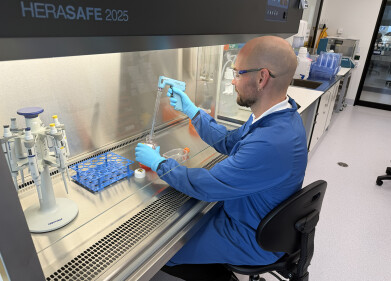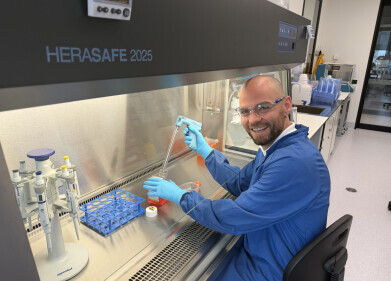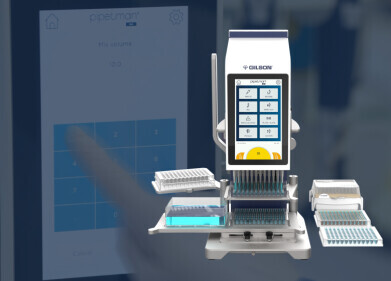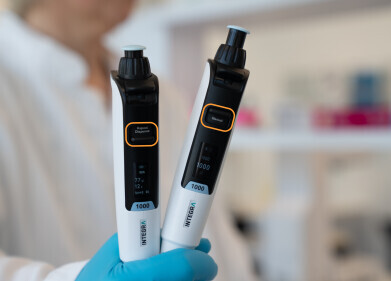Pipettes
4 Commonly Used Lab Pipette Types
May 12 2021
While all laboratory pipettes perform the same functions of aspirating, transporting and dispensing liquids, performance and accuracy can vary significantly between models. Below, we spotlight some of the most common lab pipette types used in modern science. Some are staples in high school laboratories, while others are reserved for cutting-edge research institutions.
Air displacement micropipettes
The most common micropipettes use air displacement to aspirate and dispense liquid. An air cushion in the pipette tip is used to expel air and create a vacuum that draws liquid into the chamber. Advanced laboratory-specific air displacement micropipettes feature air cushion volume settings that can be adjusted to fit the needs of the operator. Once set, the pipette expels the amount of air indicated on the volume setting and replaces it with the same volume of liquid.
While highly accurate, air displacement micro pipetting performance can be affected by factors such as temperature, atmospheric pressure and the viscosity of the liquid.
Positive displacement pipette
Positive displacement pipettes use piston-driven displacement to aspirate and dispense liquid. Unlike their air displacement counterparts, positive displacement pipettes use a piston that comes into direct contact with the liquid. The internal piston is pushed down the chamber, makes contact with the liquid and is then pulled up. This upward pressure creates a vacuum and draws liquid into the tip.
Electronic pipettes
Pipetting often calls for dozens of individual transfers, leaving laboratory personal fatigued and at risk of repetitive strain injury. Electronic pipettes automate the displacement process and allow personnel to aspirate and dispense liquid at the touch of a button. The use of an electronic motor also supports smoother and less disruptive air displacement, which helps to prevent the formation of air bubbles and reduce the risk of barrel contamination.
Multichannel pipettes
Another great way to boost efficiency in the lab, multichannel pipettes are designed to fast-track repetitive tasks. Most models feature between 8 to 12 tips and allow operators to simultaneously extract, transport and dispense multiple samples. As well as increasing productivity in the laboratory, multichannel pipettes can be a good way to minimise hand stress and prevent repetitive strain injury in the workplace.
For best results it’s essential to adhere to best practice pipetting techniques. Genetic research expert Lee Moir spotlights some key hands-on pipetting tips, as well as methods outlined in the MRC Harwell Institute Pipetting Skills course, in ‘The Art of Pipetting - Top Tips’
Digital Edition
Lab Asia Dec 2025
December 2025
Chromatography Articles- Cutting-edge sample preparation tools help laboratories to stay ahead of the curveMass Spectrometry & Spectroscopy Articles- Unlocking the complexity of metabolomics: Pushi...
View all digital editions
Events
Jan 21 2026 Tokyo, Japan
Jan 28 2026 Tokyo, Japan
Jan 29 2026 New Delhi, India
Feb 07 2026 Boston, MA, USA
Asia Pharma Expo/Asia Lab Expo
Feb 12 2026 Dhaka, Bangladesh
.jpg)


















